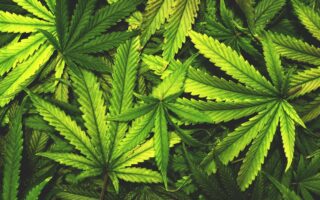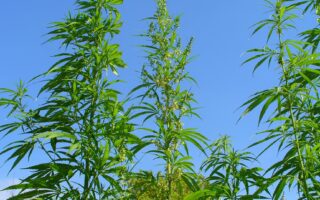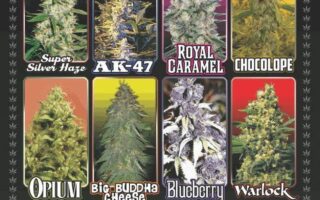Is Weed a Hallucinogen? Unraveling the Mysteries of Cannabis Perception
In a world where the boundaries of substance classification often blur, cannabis remains a particularly fascinating topic of discussion. Frequently celebrated for its therapeutic potential and recreational appeal, marijuana prompts a compelling question: does it belong among the ranks of hallucinogens? While many associate hallucinogens with mind-altering experiences that transport users to realms far beyond normal perception, the effects of cannabis can be strikingly diverse, sparking debate among users, scientists, and advocates alike. This article aims to delve into the intriguing interplay between cannabis and altered states of consciousness, exploring the nuanced ways in which weed interacts with the mind and whether its effects can truly be deemed hallucinogenic. Join us as we peel back the layers of this complex plant and navigate the landscape of perception that it so profoundly shapes.
Table of Contents
- Exploring the Nature of Cannabis: Understanding Its Psychoactive Effects
- Distinguishing Between Hallucinogens and Cannabis: A Clearer Perspective
- The Role of Terpenes and Cannabinoids in Perception Alteration
- Responsible Use of Cannabis: Recommendations for Safe Exploration of Effects
- Q&A
- In Retrospect
Exploring the Nature of Cannabis: Understanding Its Psychoactive Effects
Cannabis interacts with the brain in complex ways, primarily through its active compounds known as cannabinoids. The most recognized of these is THC (tetrahydrocannabinol), which binds to CB1 receptors in the brain, stimulating a release of dopamine that creates feelings of euphoria. Users often report effects such as enhanced sensory perception, alterations in time perception, and shifts in mood. While some may experience heightened creativity and relaxation, others may encounter anxiety or paranoia, demonstrating the plant’s dual potential for both enjoyment and discomfort. The psychoactive journey of cannabis can vary greatly depending on several factors, including strain type, dosing, and individual biochemistry.
Understanding the psychoactive nature of cannabis requires an exploration beyond THC. Many users wonder if cannabis can be classified as a hallucinogen. While it is not typically grouped with classic hallucinogens like LSD or psilocybin, certain strains and concentrations of cannabis can induce visual or auditory distortions under specific conditions. The effects can depend on the following aspects:
- Strain Composition: High-THC strains may produce more intense psychoactive effects.
- Environment: A user’s surroundings can influence their experience, making them more susceptible to perceptual changes.
- Mental State: Pre-existing anxiety or mood can modify how one responds to cannabis.
Distinguishing Between Hallucinogens and Cannabis: A Clearer Perspective
In the realm of psychoactive substances, the distinction between hallucinogens and cannabis is vital for understanding their effects and uses. Hallucinogens, such as LSD or psilocybin mushrooms, primarily alter perception of reality, often inducing vivid visual and auditory experiences. Conversely, cannabis—particularly its psychoactive component THC—generally leads to a state characterized by relaxation and euphoria, rather than significant alterations in visual perception. While both categories can influence mood and cognition, they typically operate through different pathways in the brain. Here are some key differences:
- Perception Alteration: Hallucinogens significantly distort how one perceives reality.
- Typical Effects: Cannabis usually promotes relaxation and heightened sensory experiences without losing contact with reality.
- Duration: Hallucinogenic experiences can last several hours, while cannabis effects are often much shorter, lasting a few hours.
To further clarify these concepts, a simple comparison can be illustrated in the following table:
| Aspect | Hallucinogens | Cannabis |
|---|---|---|
| Type of Experience | Altered perception, often surreal | Relaxation, euphoria |
| Visual Effects | Intense visual hallucinations | Mild enhancement of colors |
| Medical Uses | Used in psychotherapy and mental health | Prescribed for pain, anxiety, nausea |
The Role of Terpenes and Cannabinoids in Perception Alteration
When it comes to understanding how cannabis affects the mind, it’s essential to delve into the intricate dance between terpenes and cannabinoids. These compounds work synergistically to create a unique experience, influencing not just the high but also perceptions of reality. Cannabinoids, such as THC and CBD, directly interact with the brain’s endocannabinoid system, leading to alterations in mood, sensory perception, and cognition. THC, the most well-known psychoactive compound, is primarily responsible for the euphoric and potentially hallucinogenic effects that can blur the lines between reality and imagination. Its interaction with CB1 receptors in the brain triggers feelings of euphoria, relaxation, and expanded sensory awareness, which can sometimes lead to mild hallucinations in susceptible individuals.
On the other hand, terpenes—the aromatic compounds found in cannabis—play an equally vital role in shaping the overall experience. Different terpenes contribute distinct flavors and aromas, while also influencing the therapeutic effects and the qualitative aspects of the high. For instance, myrcene may enhance sedation, while limonene elevates mood. This diverse array of terpenes can modulate the effects of cannabinoids, leading to variations in perception and experience. A simple table illustrating some common terpenes and their potential impacts on perception might look like this:
| Terpene | Effect |
|---|---|
| Myrcene | Calming, sedative |
| Limonene | Uplifting, mood enhancer |
| Pinene | Alertness, memory retention |
| Linalool | Anxiety relief, relaxation |
Responsible Use of Cannabis: Recommendations for Safe Exploration of Effects
Exploring the effects of cannabis can be an enlightening experience, but it’s essential to approach it with mindfulness and care. As varying strains and consumption methods can lead to different experiences, it’s important to be aware of your environment and your own state of mind before indulging. To ensure a safe experience, consider these recommendations:
- Start Small: Begin with a low dose to gauge your body’s reaction.
- Educate Yourself: Research different cannabis strains and their effects, focusing on cannabinoid profiles.
- Stay Hydrated: Drink water before, during, and after consumption to help combat dry mouth and potential dizziness.
- Create a Safe Space: Optimize your environment by minimizing noise and distractions to enhance relaxation.
It’s crucial to understand the distinction between cannabis and classic hallucinogens. While cannabis can produce altered states of perception, especially at higher doses, it typically does not induce hallucinations in the same way substances like LSD or psilocybin do. For those venturing into cannabis exploration, a simple guide may be helpful:
| Type | Effects | Common Use |
|---|---|---|
| Cannabis | Relaxation, euphoria, altered perception | Recreational, therapeutic |
| Classic Hallucinogens | Visual and auditory distortions, profound changes in perception | Spiritual, therapeutic |
Q&A
Q&A on “Is Weed a Hallucinogen?”
Q1: What exactly is a hallucinogen?
A1: Hallucinogens are substances that alter an individual’s perception of reality, leading to hallucinations—sensory experiences that seem real but are created by the mind. Common hallucinogens include substances like LSD, psilocybin, and mescaline, which can produce vivid alterations in thought, mood, and sensory perception.
Q2: So, does weed fit into the hallucinogen category?
A2: While cannabis, commonly known as weed, is primarily classified as a psychoactive drug due to its THC (tetrahydrocannabinol) content, it does not fit neatly into the traditional hallucinogen category. Cannabis can induce altered states of consciousness and perceptual changes, which may resemble hallucinogenic experiences for some users. However, these effects are typically milder and not the same as the profound alterations caused by classic hallucinogens.
Q3: What types of effects can cannabis produce?
A3: Cannabis can elicit a range of effects, including euphoria, relaxation, increased sensory perception, and altered time perception. Some users may report mild visual or auditory distortions, which can be likened to hallucinatory experiences. However, these effects are generally less intense than those induced by traditional hallucinogens.
Q4: Are there certain circumstances where weed might cause hallucinations?
A4: Yes, in rare cases, particularly among first-time users, those consuming large doses, or individuals with predisposed mental health conditions, cannabis can trigger hallucinations or intense perceptual changes. These experiences are quite uncommon and often relate to an individual’s tolerance and psychological state at the time of consumption.
Q5: How does the way cannabis is consumed affect its effects?
A5: The method of consumption—whether smoking, vaping, consuming edibles, or using oils—can significantly impact the effects. For instance, edibles tend to produce longer-lasting and often stronger effects due to the way THC is metabolized in the liver. This can sometimes lead to more pronounced alterations in perception, but still, these are typically not classified as hallucinatory in the traditional sense.
Q6: Can people use weed to enhance or reduce hallucinogenic experiences from other substances?
A6: Some individuals may use cannabis to mitigate anxiety or discomfort during hallucinogenic experiences from other substances. It’s often reported that cannabis can help ground users when they find themselves feeling overwhelmed. However, this is highly subjective and can vary from person to person.
Q7: How should we view cannabis in the context of hallucinogens?
A7: The best view of cannabis is as a unique psychoactive substance with its own set of effects. While it may produce mild perceptual changes akin to those experienced with hallucinogens, it does not induce true hallucinations in the way classic hallucinogens do. Understanding the distinctions helps in appreciating both cannabis and hallucinogens for their different roles in the landscape of psychoactive substances.
Q8: can we categorize weed as a hallucinogen?
A8: while cannabis can induce altered states of consciousness and, for some, mild perceptual changes, it is not categorized as a hallucinogen in the classical sense. Its effects can vary widely among individuals and contexts, offering a rich tapestry of experiences that is distinct from those provided by traditional hallucinogens.
In Retrospect
As we draw the curtains on our exploration of whether cannabis qualifies as a hallucinogen, we find ourselves navigating through a landscape rich in complexity and nuance. While traditional classifications might place weed in a different category, its psychoactive properties certainly stir fascinating discussions. The rich tapestry of individual experiences, influenced by various factors such as strain, dosage, and personal physiology, reminds us that the perception of reality is a deeply personal affair.
Ultimately, the question may not be as simple as a yes or no, but rather an invitation to delve deeper into the myriad ways our minds can reshape experiences. As society continues to evolve its understanding of cannabis, one thing remains clear: the dialogue surrounding its effects is far from over. Whether you see it as a tool for creativity, a facilitator of insight, or merely a source of relaxation, the essence of cannabis beckons us to reflect on our own perceptions and experiences. So, as you venture into your next encounter with this versatile plant, consider the layers it may unveil, challenging both your mind and your sense of reality.



